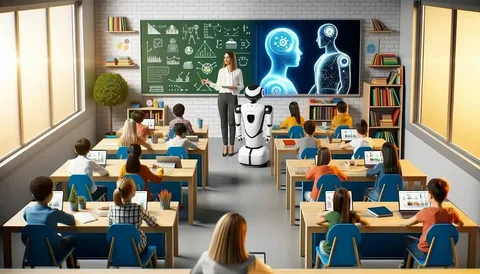
How Educational Technology is Transforming Modern Classrooms
In today’s rapidly evolving educational landscape, the integration of tech into classrooms has become more than just a trend—it’s a necessity. Educational technology has revolutionized how information is delivered, absorbed, and applied by students across all grade levels. From interactive whiteboards to artificial intelligence-driven learning platforms, technology continues to reshape the educational experience for both educators and learners alike.
The Digital Revolution in Education
The digital revolution has fundamentally altered the traditional classroom setup. No longer confined to textbooks and chalkboards, modern educational environments embrace digital tools that offer dynamic, personalized learning experiences. Students today engage with content through multiple channels, developing digital literacy skills that prepare them for future careers in an increasingly technology-dependent world.
Key Technologies Reshaping Education
Several technological innovations stand out for their significant impact on education:
- Learning Management Systems (LMS)
- Augmented and Virtual Reality
- Artificial Intelligence and Machine Learning
- Cloud-based Collaboration Tools
These technologies don’t just digitize existing educational methods—they transform them entirely, offering new possibilities for engagement and comprehension.
The Changing Role of Educators
With this technological shift, teachers find themselves evolving from knowledge providers to learning facilitators. Modern educators guide students through their educational journey, helping them navigate vast information landscapes while developing critical thinking skills. This transformation requires teachers to continuously update their technological proficiency and adapt their pedagogical approaches.
Professional Development in the Digital Age
Ongoing professional development has become essential for educators to keep pace with technological advancements. Teacher training now encompasses not only subject matter expertise but also technological fluency. Successful educational institutions prioritize continuous learning opportunities for their staff, ensuring they remain equipped to leverage the latest educational tools effectively.
Personalized Learning Through Technology
One of the most significant advantages of educational technology is its ability to personalize the learning experience. Adaptive learning platforms can assess individual student strengths and weaknesses, tailoring content delivery to address specific needs. This personalization extends beyond academic content to learning pace, format, and assessment methods.
Data-Driven Educational Decisions
Technology enables the collection and analysis of extensive student performance data. Educators can track progress in real-time, identifying patterns and intervening promptly when necessary. This data-driven approach allows for more precise educational interventions and more effective resource allocation.
Bridging Educational Gaps
Technology serves as a powerful equalizer in education, bridging gaps that traditional methods often struggle to address. Remote learning opportunities reach students in underserved areas, while assistive technologies make education more accessible to learners with disabilities. This democratization of education represents one of technology’s most important contributions to the field.
Global Classroom Connections
Digital tools facilitate connections between classrooms across geographical boundaries. Students can collaborate with peers worldwide, gaining global perspectives and cultural awareness that were previously inaccessible. These international educational exchanges prepare learners for an increasingly interconnected global society.
Challenges in Educational Technology Implementation
Despite its benefits, implementing educational technology presents significant challenges. Limited budgets, technological infrastructure disparities, and varying levels of teacher preparedness can hamper successful integration. Educational institutions must develop comprehensive strategies to address these barriers effectively.
Digital Equity Concerns
The digital divide remains a pressing concern in educational technology implementation. Socioeconomic factors often determine students’ access to devices and reliable internet connectivity. Schools and policymakers must work together to ensure that technological advancements benefit all students, not just those with abundant resources.
Future Trends in Educational Technology
Looking ahead, several emerging technologies promise to further transform education:
- Blockchain for secure credential verification
- Internet of Things (IoT) for smarter learning environments
- Advanced analytics for predictive educational interventions
- Quantum computing applications in educational research
These innovations will likely reshape educational practices in ways we’re only beginning to understand.
Balancing Technology with Traditional Pedagogy
While embracing technological innovations, educators must maintain a balance with proven pedagogical principles. Technology should enhance, not replace, the human elements of education—critical thinking, creativity, and social-emotional development remain fundamental educational priorities.
The Importance of Digital Citizenship
As technology becomes increasingly integrated into education, teaching responsible digital citizenship grows more crucial. Students must learn to navigate online environments safely, ethically, and effectively. Digital literacy curricula now address privacy concerns, information evaluation, and appropriate online behavior as essential components of modern education.
Conclusion
Educational technology continues to transform modern classrooms, offering unprecedented opportunities for engagement, personalization, and access. While challenges remain, the thoughtful integration of technological tools with sound pedagogical practices promises to enhance educational outcomes for diverse learners. As we navigate this digital educational revolution, maintaining focus on equitable access and holistic student development will ensure that technology serves its highest purpose in education—empowering all students to reach their full potential.
By embracing educational technology while preserving the human connection at education’s core, we can create learning environments that prepare students not just for today’s technological landscape but for the unforeseen challenges and opportunities of tomorrow.




